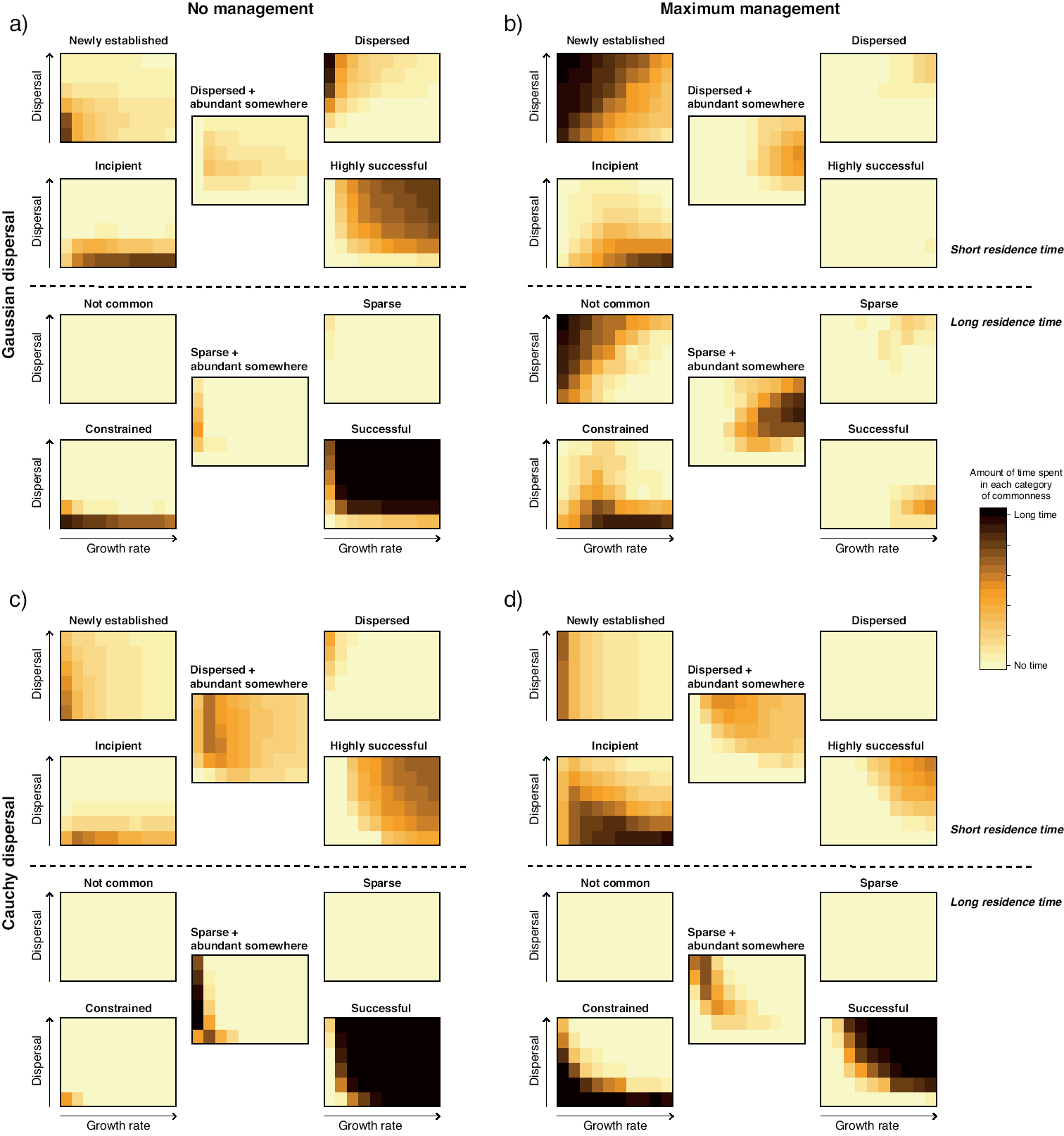
|
||
|
Modelling the fate of alien species populations with different population growth and dispersal rate, and their assignment to different categories of commonness, without (a, c) and with (b, d) maximum cross-boundary management (lowest and highest interception efficacy and synchronisation), for the logistic growth and the Gaussian (a, b) and Cauchy (c, d) dispersal kernels, using the framework presented in Fig. 1. Colours of the cells represent the proportion of time spent in each category of commonness for a specific combination of parameter values, with dark brown representing 50% of time and light yellow 0%. Simulations have been done for 20 patches with a carrying capacity K = 10 000, and the outputs were averaged over 20 replicates. Bottom-left corner is the lowest set of parameter values (see Table 1), representing low population growth and dispersal rate. |